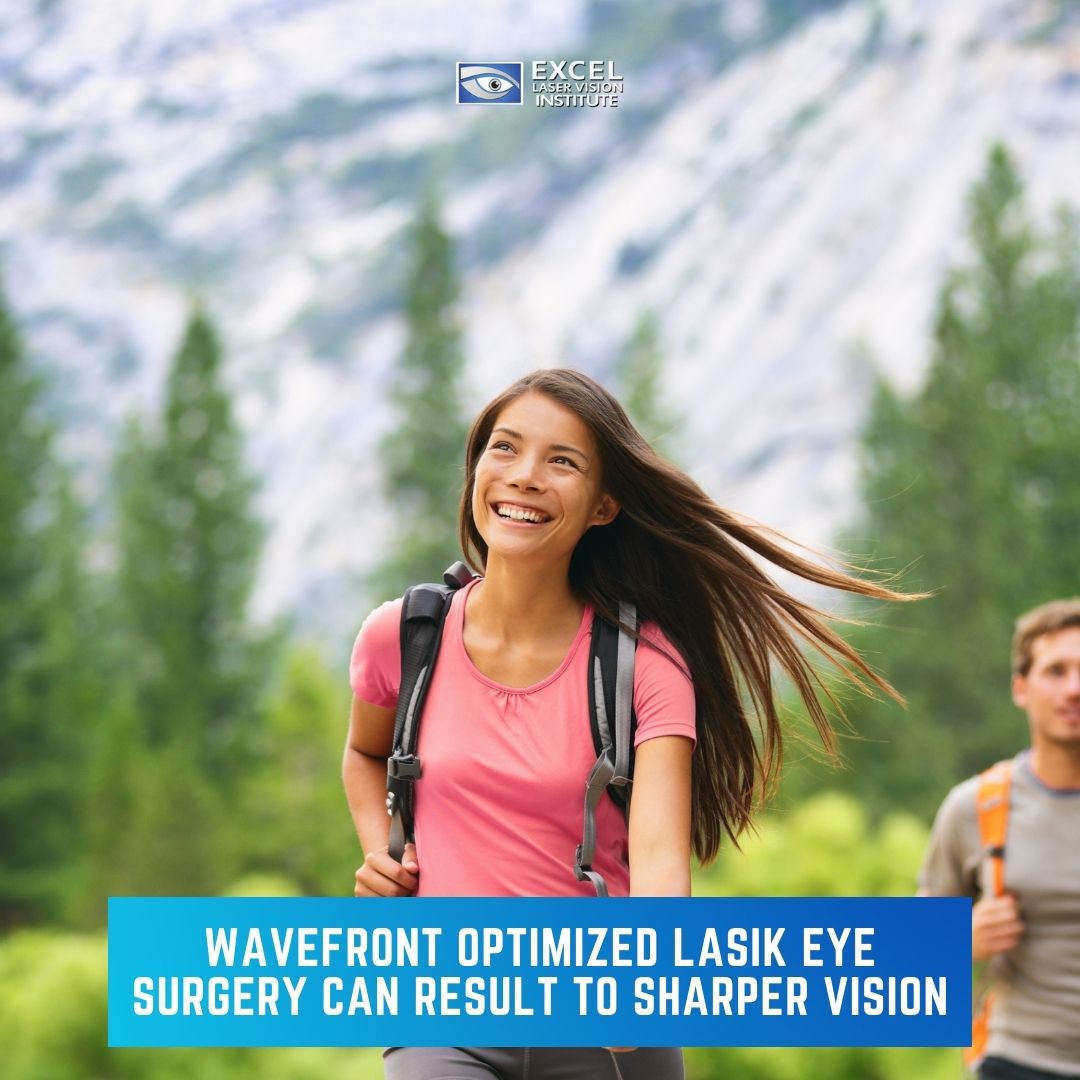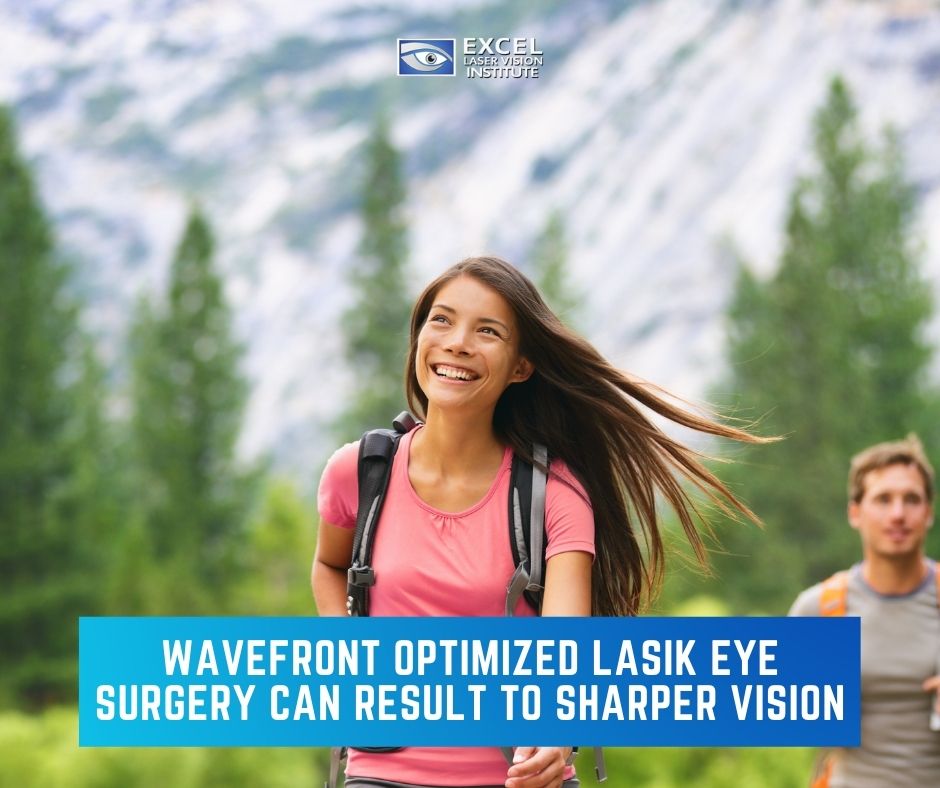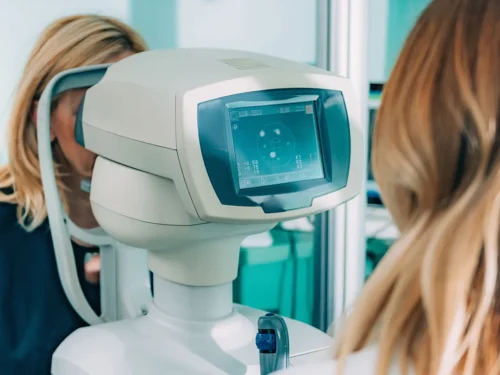
If you are a person who suffers from nearsightedness or farsightedness, you can correct your vision with a corrective eye surgery. Generally speaking, this outpatient LASIK eye surgery procedure utilizes a laser to change the shape of the patient’s cornea, enhancing the way the eyes focus light rays onto the retina. It’s a very sought-after laser vision correction procedure that has helped millions of people with eye issues worldwide.

Recently, LASIK has gone through modifications that massively improved its reliability. To get the sharpest vision after a LASIK Los Angeles procedure, think about having a Wavefront Optimized Laser Vision correction procedure. Wavefront Optimized Laser technology provides a more accurate and personalized evaluation of the one-of-the-kind characteristics of your eyes to achieve better results.
What is Custom Wavefront LASIK?
Some people who ask about LASIK eye surgery cost also want to know about custom wavefront LASIK, also known as LASIK or wavefront LASIK. Eye doctors tell us that custom LASIK or wavefront LASIK adds a significant level of precision and personalization to LASIK vision correction surgery by using advanced wavefront technology to assess the unique characteristics of a person’s eyes.
Although eyeglass prescriptions are not uncommon, millions, even billions, of people can have similar eyeglass prescriptions. Due to the unique characteristics of every person’s eyes that can’t be measured with traditional techniques used to ascertain refractive error during an eye exam, people who have the same eyeglasses prescription will see with various levels of clarity compared to individuals with the same prescription lenses.
On the other hand, custom LASIK uses more detailed information rather than just conventional eyeglasses prescription to program the excimer laser that reshapes the eye during the vision correction procedure.
The wavefront technology used for custom LASIK makes the procedure a cut above a conventional LASIK procedure in two ways:
Custom Wavefront LASIK is More Accurate
While your eye doctor gives you a routine eye exam, he or she will bring in various lenses in front of your eyes as you look at an eye chart and ask you which lens lets you see the letters clearer? Is it lens 1 or lens 2? Occasionally the lenses will look similar, and it’s difficult to select which one makes you see the chart clever. Perhaps it’s a lens in between the two?
Your eye doctor uses a dial instrument that requires them to click through to find out a person’s eyeglasses prescription using the smallest unit of power – 0.25 diopter (D). That’s why eyeglass prescriptions have numbers such as -1.25 D and -1.50 D, but not 1.3 D.
The power of lenses needed to correct a person’s vision is measured in 0.01 D units when it comes to wavefront LASIK. Essentially, during your eye exam, rather than your eye doctor giving you “lens 1” and “lens 2” to select from, you have twenty-four extra lenses in between these two to choose from.
Fortunately, choosing the lens that precisely corrects your vision for a custom LASIK procedure is carried out right away by a computer, rather than you making the decision.
When assessing the refractive errors within the eyes in 0.01 D increments (instead of 0.25 D increments, as in a routine eye exam), measurements used for custom wavefront LASIK are 25 times more accurate than lens powers used in an eyeglasses prescription.
Custom Wavefront LASIK is More Individual
When your eye doctor ascertains your eyeglass prescription during your eye exam, they determine your eye’s ability to focus light as a complete whole. One lens prescription is worked out for the whole eye.
Measurements collected for custom LASIK are accumulated from hundreds of separate reference points on the eye’s front surface. All these data points are used to produce a detailed map of refractive error and focusing imperfections known as higher-order aberrations throughout the entire cornea.
Afterward, this map is used to program the excimer laser to give a personalized vision correction for your particular requirements.
What are the Types of Custom LASIK?
There are three essential types of custom LASIK eye surgery procedures:
- Wavelength-Guided LASIK: This procedure involves detailed, wavefront-generated measurements based on how light waves travel through your eyes and fall on the retina, to produce a laser treatment that is entirely personalized for the eye anatomy and vision requirements. Besides, correcting nearsightedness, farsightedness, and astigmatism, wavefront-guided LASIK lowers irregular higher-order aberrations that can lessen visual clarity even after all significant refractive errors are corrected.
- Wavefront-Optimized LASIK: This procedure involves detailed measurements of the curvature of the eye’s front surface to maintain the natural aspheric shape of the cornea. Maintaining the cornea’s natural shape lowers the risk of a specific type of higher-order aberration known as spherical aberration, which can happen naturally in an eye or result from other types of laser vision correction procedures. Typically, spherical aberration is brought about by halos around lights and other night vision problems.
- Topography-Guided LASIK: This procedure involves detailed measurements of the cornea’s surface to program the laser to tackle vision issues caused by corneal irregularities (including corneal scars) besides refractive errors. Topography-guided LASIK is not a wavefront LASIK procedure, but it provides a more personalized vision correction than conventional LASIK.
Does Custom LASIK Provide Better Results than Traditional LASIK?
Custom LASIK delivers the most precise form of LASIK available today. Individuals who go through custom LASIK achieve more significant vision results, with a higher possibility of achieving 20/20 vision and better overall vision.
Who are the Ideal Candidates for Wavelength?
The main reasons why people choose to undergo LASIK is because they are fed up with wearing eyeglasses or contact lenses, for cosmetic reasons, for social or marriage, or for lifestyle activities that are inhibited by eyewear such as outdoor sports such as golf, football, water sports or hiking.
Some people don’t believe eyeglasses are attractive. Frequently, there is some level of distortion when looking through the periphery of the glasses, the field of vision is lowered, and sometimes when leaving a cold room, moisture can fog the glasses which can be unsuitable for particular careers such as the Army, Merchant Navy, Airlines, Air Force, Railways and professional sports.
On the other hand, contact lenses need a lot of attention to hygiene when inserting removing them since lack of hygiene can result in infections.
Wavefront LASIK gets rids of all these disadvantages. Wavefront-guided LASIK has made it possible to treat a larger spectrum of patients. This procedure especially helps people with eye issues to have a clear vision, which would have otherwise been difficult with the older procedures. Furthermore, those unhappy with any form of vision correction are candidates for Wavefront-guided customized treatments.
What are the Advantages of Wavefront-Guided LASIK Over Standard LASIK
Recently, studies have shown these advantages of wavefront-guided LASIK compared to traditional LASIK:
- 100% patient satisfaction with very few side effects or complications.
- 70% of these patients achieved one to two lines of visual acuity more than what was anticipated from this treatment before the procedure.
- 16% of wavefront-guided LASIK patients got a post-procedure uncorrected visual acuity of 6/3 [3 lines smaller than normal].
- Wavefront treatment results were found to bring stable, accurate post-operative results.
- The incidence of postoperative symptoms such as glare, halos, lessened contrast sensitivity, and poor night vision as with standard LASIK are overall absent or significantly reduced with wavefront treatments.
- Wavefront-guided treatment has applications in complicated post-refractive surgery (RK, PRK, LASIK) patients (with considerable symptoms, decentred treatments) as well as in patients professionally needing acute vision.
What are the Features of a Wavelength Laser?
The WaveLight is unsurpassable for wavefront procedures using the quickest and most sensitive eye tracker in the world [500 Hz] to ensure perfectly accurate and well-centered treatments.
This laser has the fastest treatment time, about [500 Hz], which is a vital factor in ensuring uniform treatment over the entire surface of the cornea by minimizing dehydration of the cornea and other external influences during the procedure. Plus, it manages to customize the corneal shape to improve visual acuity and improve contrast, especially in dim light conditions.
The highly advanced WaveLight laser utilizes a ‘Flying Spot’ of 0.9 mm, a requirement to provide accurate placement of laser treatment. This specific treatment leaves nothing to chance. Wavefront procedures very often leave patients with eyesight better than expected. As a matter of fact, some may say patients are left with super–vision or eagle vision.
At Excel Laser Vision Institute, LASIK surgery improves your vision. However, you should consult with the experts about which eye correction surgery is best for you. If you want to know more about LASIK surgery, please do not hesitate to call us at (866) 923-9235.




